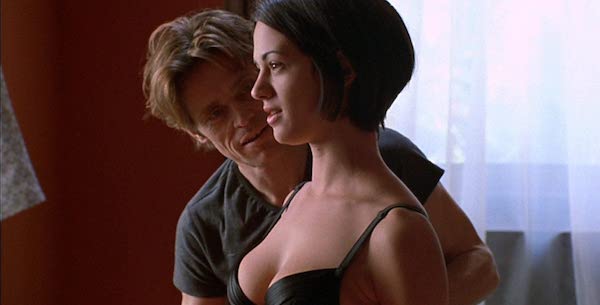Genius, provocateur, madman: Abel Ferrera has donned many hats throughout his nearly five-decade career, yet never has he produced such consistent and introspective work than within his recent tenure with four-time Academy Award-nominated actor and chameleon Willem Dafoe. Though this Ferrera-Dafoe renaissance has only prevailed within the past decade, yet these two auteurs have been collaborating since before the turn of the millennium.
While both Ferrara and Dafoe have served their time doing everything from X-Rated skin flicks to gangster pictures to gothic horror endeavors, nothing has quite held arthouse audiences and critics as captive as Pasolini, Tommaso, and Siberia; well, that is for audiences who can view it. Before this June, both Tommaso and Siberia have been wildly unavailable outside the festival circuit.
This hesitance to properly release his films is not a new occurrence. For example, when his 2014 feature Welcome to New York was being requested to be cut by IFC in exchange for a traditional release he had this to say to fellow filmmakers: “And as for my brother and sister filmmakers, don’t roll over to these punks.”

While there’s speculation on why his early 2000’s features Go Go Tales and Mary haven’t had U.S. distribution (and whether it’s by choice or the alleged spat with HBO), we may never be enlightened. However, hope is on the horizon, as earlier this year Kino Lorber announced they had purchased both Tomasso and the unreleased documentary about its titular subject, The Projectionist.
Before the Storm
When Abel Ferrara first cast Willem Dafoe in the psycho-sexual cyberpunk journey New Rose Hotel, it was incredibly evident what sensibility he was attempting to display within this pre-Giuliani New York: one consumed with equal amounts of crime and charm. With this picture and the hyperactive Go Go Tales — especially the latter’s coke-fueled head performance — this pairing created larger-than-life characters who are fully realized in this fantastical world. While entertaining as it was spontaneous, it never quite delved into the psyche of the man behind the camera. In between this and the immense portrait of Italian legend Pier Paolo Pasolini, they made a less-than-notable apocalyptic tragedy that fared as a test-run for their brilliant biopic.
When viewing Pasolini, you begin to realize how many similarities can be drawn from the icon’s life, work, and reputation to that of Ferrara’s. Both are auteurs who dabble in formalism and experimentation within the medium. The duo has received claims of only having exploitive and low-brow content to offer, yet in their respective times, they both have acquired loyal groups who idolize them. This odd affinity towards a filmmaker who embodies so many similar aspects of the larger mosaic was only the tip of the iceberg as far as self-exploration is concerned. This deep dive also marks an important stylistic turning point within this expansive career as it combines dreams and reality into a mix beyond belief.
If Pasolini is a wade into the shallow end of Ferrara’s mind, then Tommaso is a dive into the Pacific Ocean. There’s a great deal of disdain and self-loathing within this picture that’s the core of these collaborations. For those unaware, Tommaso is an autobiographical drama revolving around the titular character in a mirroring exploration of his life in Italy with his wife and daughter; a journey taken by Abel Ferrara in 2007 and, as he puts it, “The romantic version is that I fell in love with her, and we had the baby,” and cites post-9/11 funding difficulties to be a factor.
This melding of fact and fiction is ever-present as the style of these newest collaborations — particularly the picture being examined now — has involved a tone and presentation reminiscent of a documentary. Abel blends his life and works into this whirlwind of character. His life is transparent through lines of dialogue and moments seen on celluloid that have been expressed within interviews and documentaries filmed years before. Perhaps, even more, telling are the storyboards seen within this film that eventually can be traced to a more dreamy and dark vision. That vision is the cosmic and explosive Siberia.
“Do you actually believe you’ll find your soul here?”
If Tommaso took the life and times of Abel Ferrara and put it into a real context that gave this observation a narrative ground while still being capable of floating into a realm more imaginative, Siberia gives the latter half of that statement an entirely new meaning. Siberia uses dreams and fragmentation to express this inner conflict and self-critique through a character that can easily be projected upon the director.
As stated by Tomasso through the storyboards seen within, it’s clear that art and life are one and the same within the vast world of Abel Ferrara. There’s a specific moment within Siberia, as our protagonist is in the midst of a breakdown: he has a vivid and distinct confrontation with his reflection. These small, nuanced moments that amplify the outlook on life and art within the context of a gripping tale of memory and how we perceive time. Ferrara is at his most vulnerable and telling in this soon-to-be-released gem.
Conclusion: The Future of the Duo
While the jury is still out on the fate of Siberia, especially after the middling festival reception, Tomasso and the still widely unseen documentary The Projectionist have been bought by Kino Lorber. As Pasolini has a proper Blu-ray release, also via Kino Lorber, there are many more opportunities in store for this fascinating and introspective pair.
What do you think? Do you have a favorite film that Willem Dafoe and Abel Ferrara have teamed up on?
Tommaso is available to rent here.
Does content like this matter to you?
Become a Member and support film journalism. Unlock access to all of Film Inquiry`s great articles. Join a community of like-minded readers who are passionate about cinema - get access to our private members Network, give back to independent filmmakers, and more.